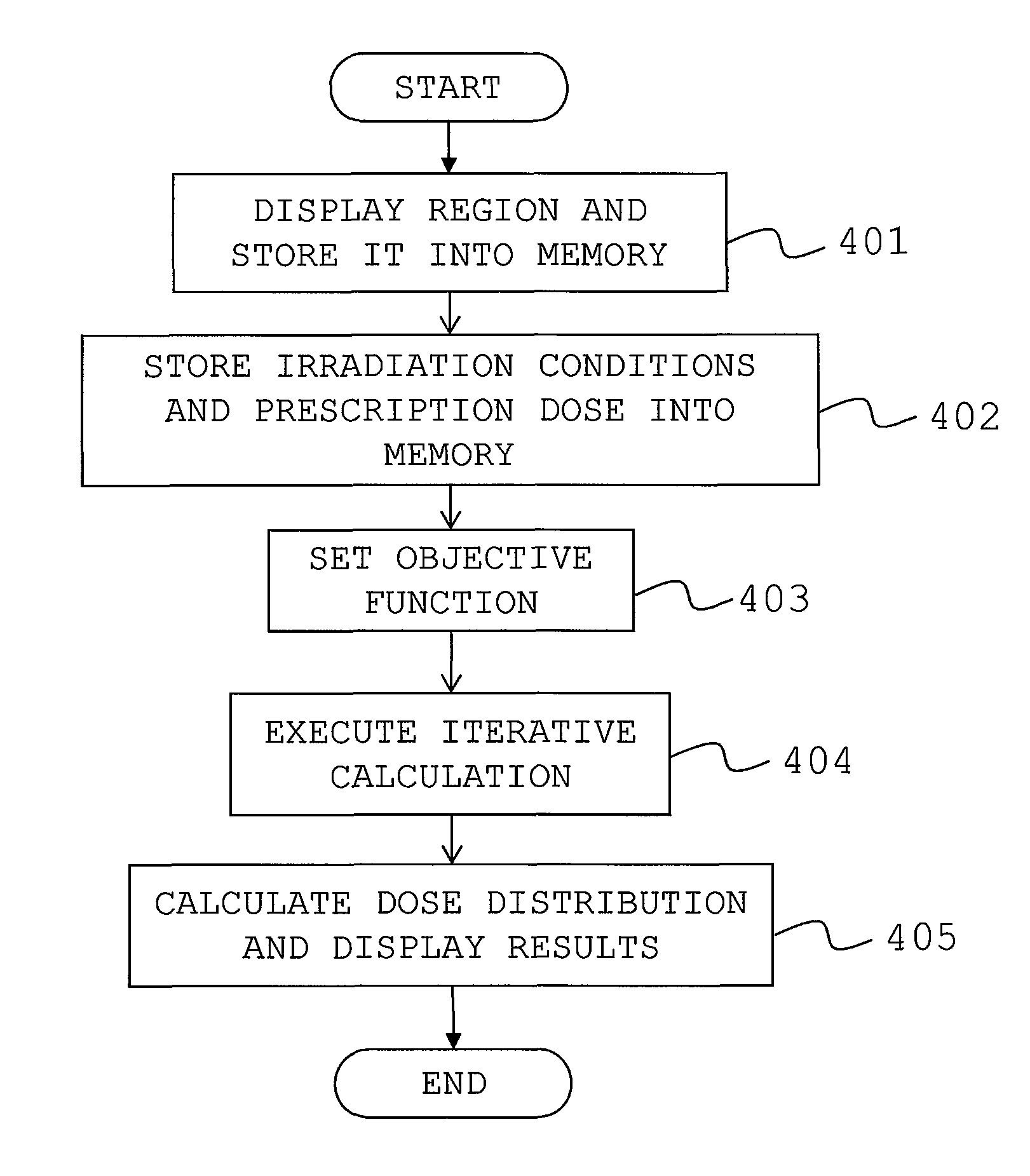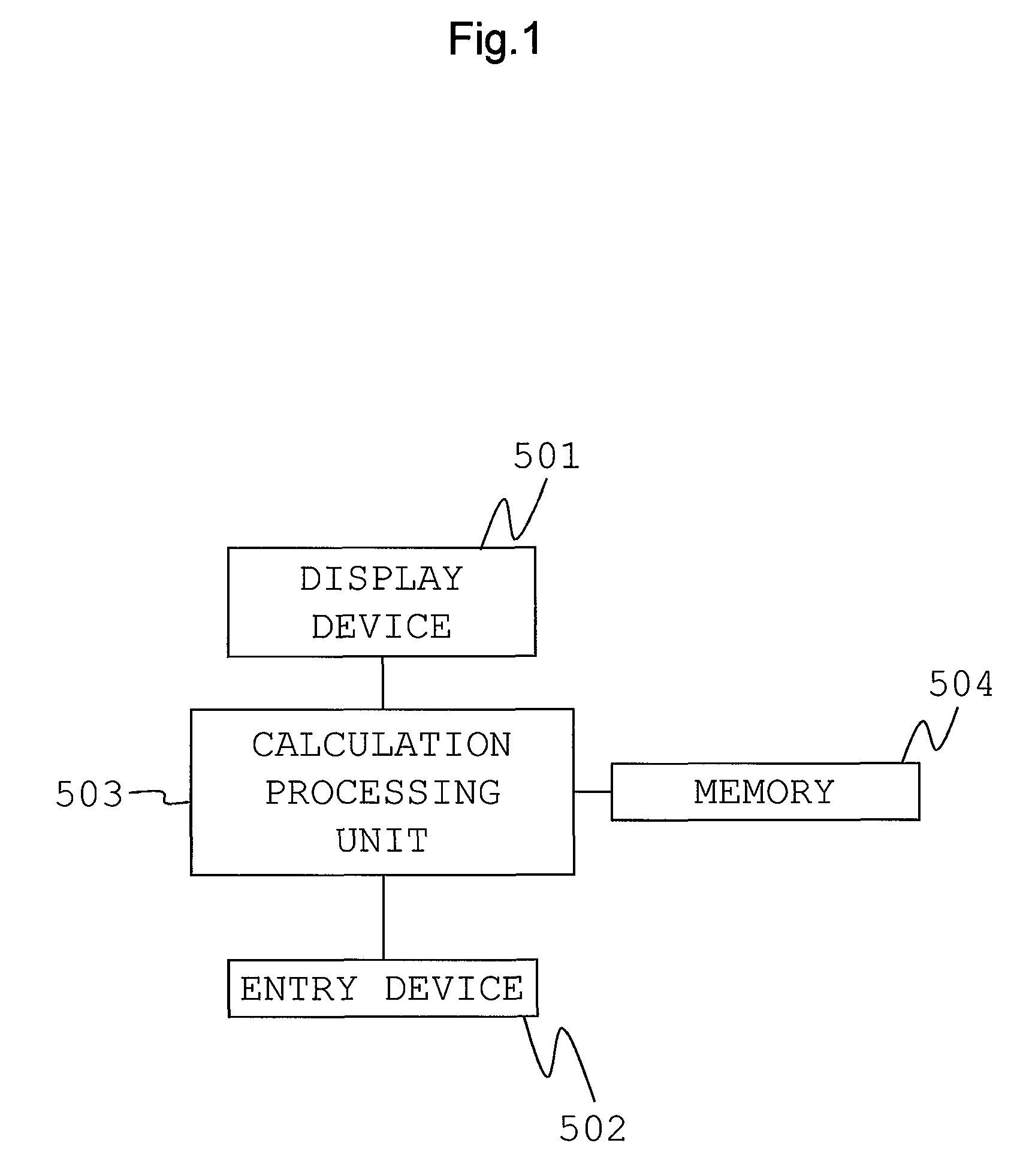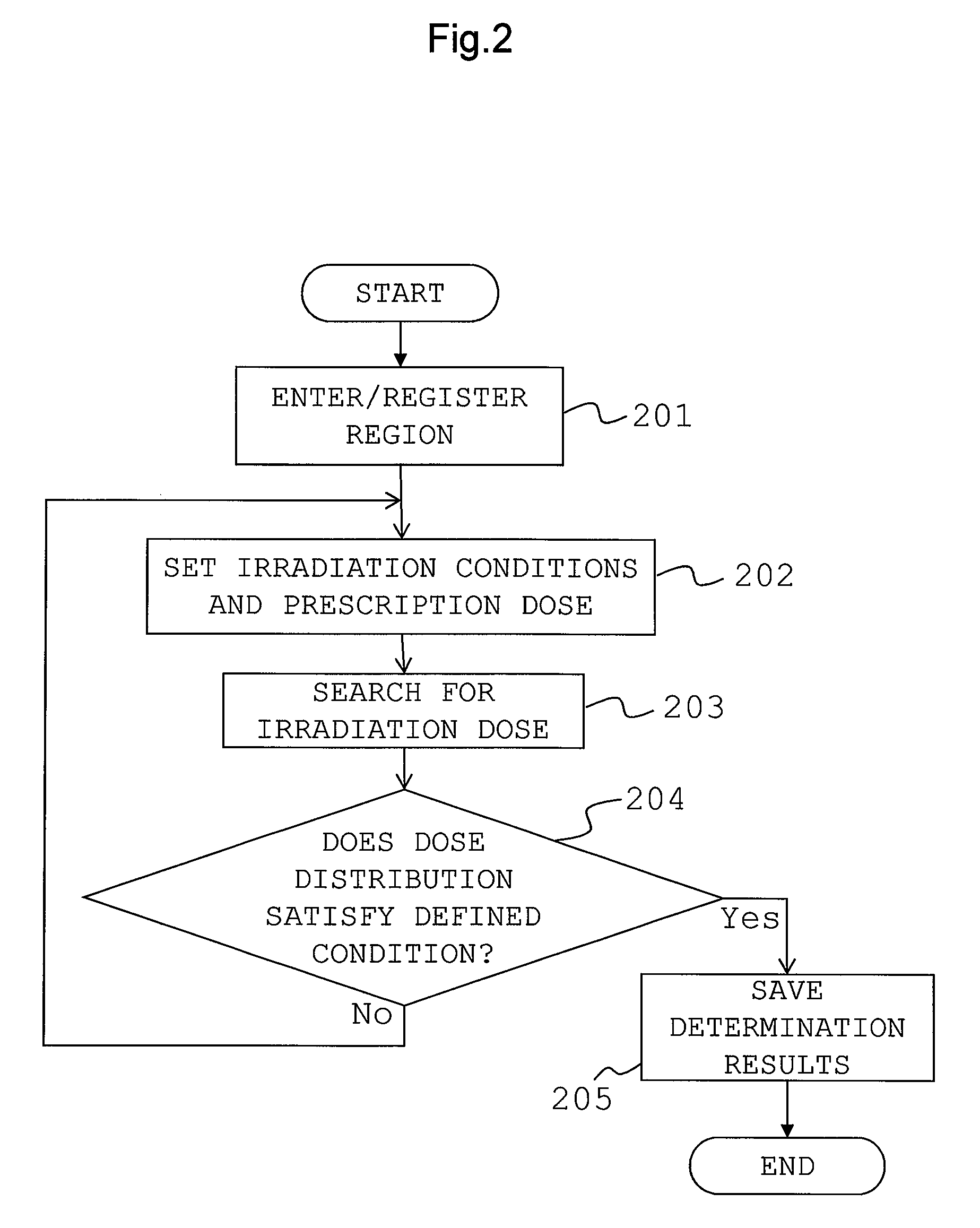Radiation treatment planning system
a technology of radiation treatment and planning system, applied in the field of radiation treatment planning system, can solve the problems of significant increase in calculation time and increase in iterative calculation load, and achieve the effect of reducing tim
- Summary
- Abstract
- Description
- Claims
- Application Information
AI Technical Summary
Benefits of technology
Problems solved by technology
Method used
Image
Examples
Embodiment Construction
[0024]An embodiment of a radiation treatment planning system according to the present invention will be described hereunder using the accompanying drawings.
[0025]The embodiment of the radiation treatment planning system according to the present invention is described below using FIGS. 1 to 7.
[0026]FIG. 1 is a diagram showing schematically a configuration of the radiation treatment planning system according to the embodiment of the present invention.
[0027]Referring to FIG. 1, the radiation treatment planning system according to the present embodiment schematically includes a display device 501, an entry device 502, an calculation processing unit 503, and a memory (storage device) 504.
[0028]The display device 501 has a region entry screen, on which CT images and other medical image information (tomographic image information) obtained by imaging a patient's target volume are displayed on a slice-by-slice basis. The image information is stored within, for example, the memory 504 of the ...
PUM
 Login to View More
Login to View More Abstract
Description
Claims
Application Information
 Login to View More
Login to View More - R&D
- Intellectual Property
- Life Sciences
- Materials
- Tech Scout
- Unparalleled Data Quality
- Higher Quality Content
- 60% Fewer Hallucinations
Browse by: Latest US Patents, China's latest patents, Technical Efficacy Thesaurus, Application Domain, Technology Topic, Popular Technical Reports.
© 2025 PatSnap. All rights reserved.Legal|Privacy policy|Modern Slavery Act Transparency Statement|Sitemap|About US| Contact US: help@patsnap.com



